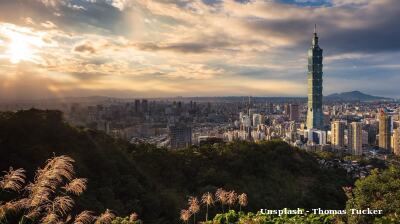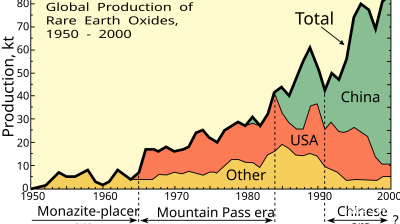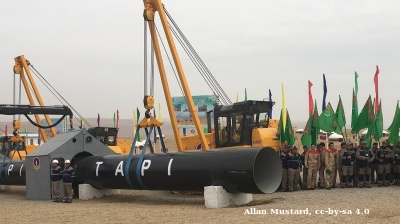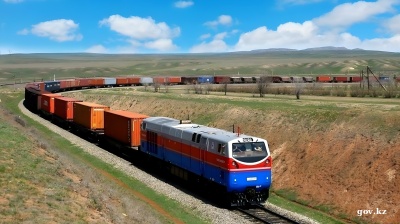Tajikistan and Kyrgyzstan are the two poorest countries in Central Asia—but in their mountains, they have something all the richest countries in the world want.
Critical raw materials (CRM) are essential ingredients in making a great range of products from smartphones and computers to solar energy cells, wind turbines, electric vehicles (EVs) and energy storage systems.
Kyrgyzstan and Tajikistan, as it happens, have relatively untouched deposits of many of sought-after CRM minerals. A huge boost in revenue could be in store for the two countries, but they will need foreign assistance to get the resources out of the ground and to far-flung markets.
What’s in the ground?
Tajikistan claims to have deposits of every element on Mendeleev’s periodic table, but those of particular interest at the moment are the 34 CRMs on a European Union’s list.
Tajik President Emomali Rahmon spoke to a group of visiting Qatari businessmen and investors on January 22, telling them Tajikistan would be an ideal place to produce electric vehicles (EVs) since the country has an aluminium plant as well as deposits of lithium.
Tajik hosts also informed the Qatari guests that Tajikistan has “800 deposits of minerals, rare and precious metals, including copper, silver, gold, lead, lithium, antimony, nickel, tungsten, vanadium and other rare minerals.”
They could have added beryllium, rubidium, cesium, titanium, tantalum, gallium, indium, actinium, radium and francium to the list.
A week after Rahmon’s observations, Ilhom Oymuhammadzoda, head of the Tajik government’s geological department, confirmed Tajikistan has large amounts of antimony, used in producing bullets and other ammunition (a point not lost on the US defence industry), semi-conductor devices, batteries and machine bearings.

Rivuti Bolo in Tajikistan is thought to have one of the largest deposits of antimony in the world (Credit: images-of-elements.com, cc-by-sa 3.0).
Oymuhammadzoda said geological surveying of the Rivuti Bolo site in the northern Gornaya Matcha district (Sughd region), indicated it has the largest deposit of antimony “in Central Asia and is only a little short of being the largest in the world.”
Kyrgyzstan, meanwhile, is known for its gold mining industry but the country also has deposits of antimony, manganese, vanadium, tungsten, beryllium, bismuth, lithium, tantalum, niobium and rare earths.
However, foreign mining companies have experienced difficulties operating in Kyrgyzstan.
Canadian company Centerra Gold (earlier called Cameco) operated the flagship Kumtor gold mine in northeastern Kyrgyzstan for nearly 30 years, until the authorities placed it under external management in 2021 and eventually wrested total control from the Canadian company.
Current President Sadyr Japarov, who came to power in late 2020, had called for nationalisation of Kumtor at protests as far back as 2012.
It is also the case that Chinese mining companies have been forced to suspend or totally discontinue operations in several areas of Kyrgyzstan following complaints of environmental damage made by local inhabitants.
However, Kumtor and other gold mines in Kyrgyzstan are nearing the end of commercial productivity after decades of mining. New sources of income will be needed.
On February 8, Kyrgyzstan’s parliament passed amendments to the law on subsoil use. The amendments “strengthen state control over the geological study of large and medium-sized mineral deposits.”
That same day, President Japarov signed a decree “On the implementation of the National Project for the extraction of polymetals and rare earth elements [REEs] for the dynamic development of the economy of the Kyrgyz Republic.”
Also on February 8, parliamentary deputy Balbak Tulobayev proposed restarting the development of the Ak-Tyuz site, operational in the Soviet era, where there is uranium and other minerals.

The Soviet-era uranium production plant in Ak-Tyuz, Kyrgyzstan (Credit: UNDP).
The lingering problems of contamination from Soviet-era uranium mines plague several dozen communities in Kyrgyzstan, and that led to a ban on uranium exploration or mining in the country that came into effect at the beginning of 2020.
Prior to the ban, exploration for uranium was being carried out at 18 sites in Kyrgyzstan.
The price of uranium averaged some $40 per pound in 2023, but the price shot up to around $100 in the first weeks of 2024 due to looming supply shortages.
This price increase was likely the reason Japarov visited the area near the Kyzyl-Ompol uranium mine in northeastern Kyrgyzstan on February 20 and announced that the government was restarting mining operations there.
The race is on
The US State Department hosted the inaugural session of the Critical Minerals Dialogue on February 8
The C5+1, is a grouping of the five Central Asian countries and the United States, and when US President Joe Biden met with the Central Asian leaders on the sidelines of the UN General Assembly in September 2023, he signalled America’s interest in CRM in Central Asia.
A US State Department statement mentioned the United States’ interest in the Central Asian region’s involvement in global critical minerals supply chains, strengthening economic cooperation and advancing the clean energy transition, while also protecting Central Asia’s unique ecosystems.
On January 29-30, the European Union hosted the EU-Central Asia Transport Connectivity Investors Forum.
The EU unveiled a 10-billion-euro financing and investment programme for Central Asia Cooperation that included cooperation in extracting and exporting CRM.
EU Foreign Affairs High Representative Josep Borrell mentioned discussions with the Central Asian representatives on CRM and said that it would be a topic in the upcoming EU-Central Asia summit in Uzbekistan, scheduled for this spring.
Russia has also lately been discussing cooperation in mining with Tajikistan.
When President Rahmon visited Moscow last November, Russian President Vladimir Putin said: “Russian companies are interested in joint geological exploration and production of uranium, as well as rare and rare earth metals, including lithium, with Tajik partners.”
Central Asia’s eastern neighbour China has been searching for CRMs in Central Asia, in some cases, for more than a decade.
An article from December 2016 reported Chinese geologists were advancing further westward from the Tajik-Chinese border as they searched for and recorded mineral sites in the high mountains of Tajikistan’s eastern Gorno-Badakhshan Autonomous Oblast (GBAO).
The report said Chinese geologists had already been working in that area for some six years and had together with Tajik geologists “identified and mapped deposits of at least 47 minerals throughout GBAO.”
Chinese mining companies have the largest presence in Kyrgyzstan. These companies so far have concentrated on gold and to a lesser extent coal, but their long experience in Kyrgyzstan (the Zhong Ji mining company started operating in Kyrgyzstan in 2009) and work at sites around the country has surely given these companies an idea of where other mineral deposits could be, or are, located.
However, the Kyrgyz people’s unfavourable image of Chinese mining companies is a major drawback for China. Additionally, Kyrgyzstan already owes China’s Exim Bank some $1.7bn, amounting to 43% of Kyrgyzstan’s total external debt and Bishkek might not want to take more loans from its giant eastern neighbour.
When and for whom
Actual production of CRM in Kyrgyzstan and Tajikistan is still likely several years away. Exploration successes are needed before viable production can start and both Central Asian countries will need to select foreign partners for financial and technical assistance.
Fortunately, it appears the minerals in question will be in demand for many years to come.
The perennial question in the case of all Central Asian states is will this new source of revenue lead to any improvement in the socio-economic situation of the people, or will it merely provide a new source of income for the countries’ elites.
There is also the concern over potential environmental damage, especially as the headwaters of many transboundary rivers are in the mountains of Kyrgyzstan and Tajikistan.
Features

Russian e-commerce giant Wildberries goes on a mysterious M&A spree
Russian e-commerce giant goes on M&A spree Almost a year after the controversial merger with a leading outdoor advertising firm, Russia’s leading e-commerce site Wildberries is indulging in a fresh bout of eyebrow raising deals.

US expands oil sanctions on Russia
US President Donald Trump imposed his first sanctions on Russia’s two largest oil companies on October 22, the state-owned Rosneft and the privately-owned Lukoil in the latest flip flop by the US president.

Draghi urges ‘pragmatic federalism’ as EU faces defeat in Ukraine and economic crises
The European Union must embrace “pragmatic federalism” to respond to mounting global and internal challenges, said former Italian prime minister Mario Draghi of Europe’s failure to face an accelerating slide into irrelevance.

US denies negotiating with China over Taiwan, as Beijing presses for reunification
Marco Rubio, the US Secretary of State, told reporters that the administration of Donald Trump is not contemplating any agreement that would compromise Taiwan’s status.




